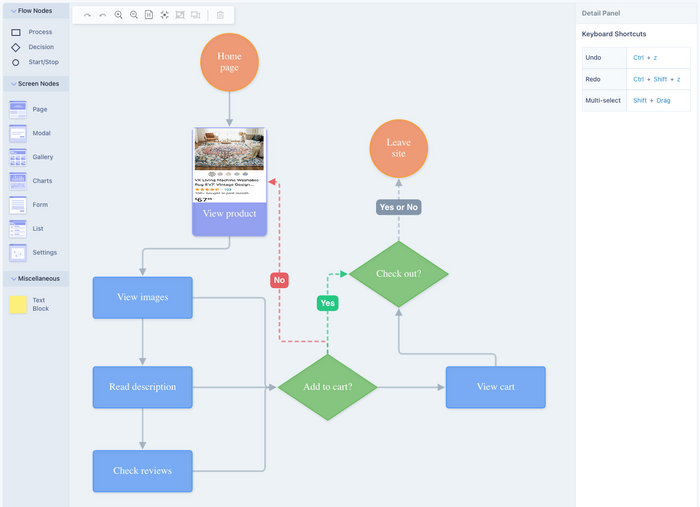
Using SWOT Analysis as a UX Professional
As UX professionals grapple with shifting user expectations and advances in technology and AI, they need tools that not only diagnose problems but also inspire actionable solutions.
This is where SWOT analysis comes into play. An acronym for Strengths, Weaknesses, Opportunities, and Threats, SWOT is a strategic planning tool with roots in business management.
Over the years, SWOT has evolved into a versatile framework that’s applicable across various fields, including our dear friends in UX.
Let’s take a look below using real-world examples so you’ll understand how SWOT analysis can benefit you and guide your strategic thinking.
What does SWOT analysis mean?
SWOT analysis is a framework that examines four key dimensions to guide strategic decision-making.
The history of SWOT analysis dates back to the 1960s and is primarily attributed to Albert S. Humphrey, a management consultant.
He developed this technique during a research project at Stanford University by trying to understand why corporate planning often failed. As a result, SWOT was born with a goal of assessing the strategic position of a business in a structured way.
In the context of UX, each component of SWOT takes on an even deeper meaning:
- Strengths: These are internal attributes that give a UX project or team an advantage. This could be your team’s creative prowess, advanced research tools, or a strong user engagement strategy.
- Weaknesses: In this context, weaknesses are internal factors that hinder a UX project's success. Common examples include limited resources, gaps in technical skills, or inefficient workflows.
- Opportunities: These include external elements that your team can exploit to its advantage, like emerging tech trends, shifts in user behavior, or new market segments.
- Threats: Here, threats are likened to external challenges that might negatively impact your UX work, like rising competition, rapid technological change, or evolving user expectations.
Here’s an example of what conducting a SWOT analysis can look like if you were part of a UX team working on a mobile health app:
Your team's extensive experience in crafting user-friendly mobile interfaces is a significant strength. This skill ensures that your app will be intuitive and easily navigable, which is vital for user engagement and satisfaction.
However, there's a challenge. Your team’s weakness is that it lacks expertise in data security, a critical component for health apps that handle sensitive personal information. This gap poses a risk to your app’s credibility and user trust, potentially limiting its success.
On the opportunity front, you notice the increasing public interest in personal health monitoring, especially wearable technology.
This trend presents a valuable chance for your team to integrate your app with wearable devices, expanding your user base and staying at the forefront of this development.
But there's also an external threat looming — evolving health technology and privacy regulations. These shifts could quickly render your app outdated or non-compliant if not closely monitored and addressed, which will affect its market relevance and legal standing. Not ideal!
In this situation, your team's strong background in mobile UX design is balanced by a need to enhance data security knowledge.
To capitalize on the health monitoring trend and mitigate the risks of evolving regulations, strategic moves like investing in data security training or forming partnerships with wearable tech companies could be key.
Decisions like this ensure your health app remains user-friendly, secure, and compliant with industry standards.
Applying SWOT to your UX projects
Implementing SWOT analysis in your UX project not only requires strategic thinking but also an organized approach to managing your insights and collaborations.
Here’s how we would recommend using SWOT:
1. Conduct a thorough analysis
Start by gathering your team for a brainstorming session. The more the merrier! Don’t forget to use tools like whiteboards or digital collaboration platforms to visually map out these elements.

2. Give a detailed breakdown of each element
Break down each SWOT component (Strengths, Weaknesses, Opportunities, Threats) with specific examples relevant to your UX project.
Then, examine each aspect of SWOT in detail.

For strengths, consider unique skills or resources your team possesses, like proficiency in a specific UX design software.
For weaknesses, honestly assess areas like budget constraints or skill gaps.
Opportunities could include new market trends or technological advancements relevant to UX, while threats might encompass competitive pressures or changing user needs.
Tip: Leverage cross-departmental insights to enrich your SWOT analysis. Input from various teams can reveal hidden strengths or unforeseen threats.3. Develop actionable strategies
After discussing and analyzing each SWOT element, it’s time to get down to business and find solutions with tangible strategies!
For example, if a lack of data security knowledge is a weakness, consider implementing a training program or hiring an expert.
Address weaknesses, like a lack of data security expertise, by scheduling training or hiring specialists.
Leverage strengths, like design expertise, to differentiate your project in the market.
Tip: Ensure strategies are SMART (Specific, Measurable, Achievable, Relevant, Time-bound) to increase the likelihood of success!4. Implement and monitor what happens next
Now it’s time to put your strategies into action as part of your project roadmap. This next step might involve redesigning certain elements, conducting more user research, or enhancing team skills.
You can use tools like UserBit for project tracking and collaboration to keep everyone on the same page.
Tip: As the UX field is dynamic, don’t forget to regularly revisit your SWOT analysis to ensure it remains relevant. Platforms like us over at UserBit can be useful for documenting these insights and sharing them with your team or stakeholders.

